On Saturday, Lily and I went out for a date.
It was only the second time since Baxter was born that we were able to get away for quality time, just the two of us. We headed up to Doukénie Winery near Hillsboro, Virginia.
Here it is on a topographic map:
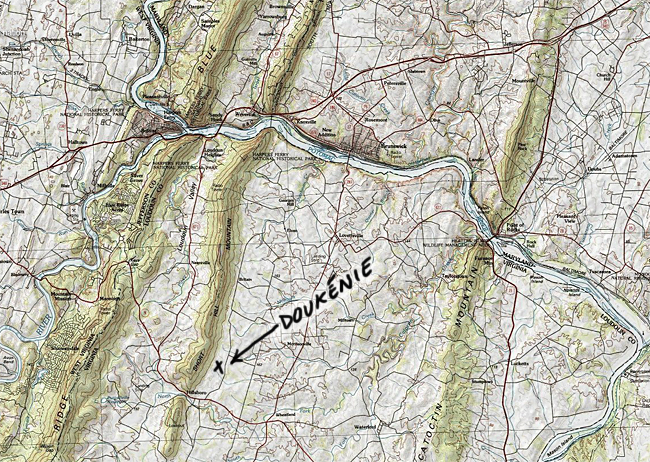
Here’s what it looks like from the ground:
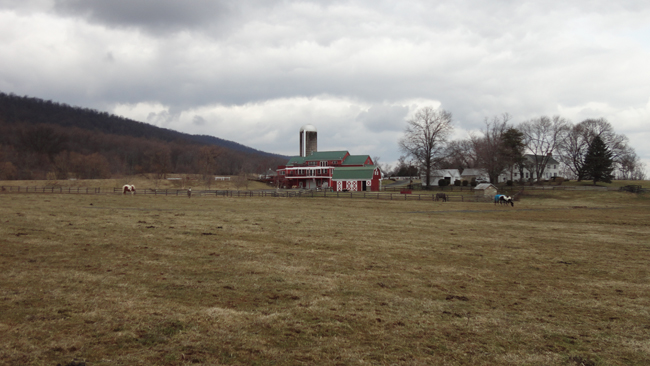
In a couple of weeks, I’m giving a geology talk at Doukénie on the geology of the Blue Ridge province (in which it is squarely situated), and discussing terroir with the smart, articulate members of the DC Science Writers Association (DCSWA, pronounced “duck-swa”). My ulterior motive in dragging my sweet bride there was to scope out the rocks, and see if there was anything worth looking at. Well, as you can tell from the previous two images, there is a big mountain there. That mountain is called Short Hill in Virginia, but if you traipse across the Potomac, you’ll find that Marylanders refer to the same topography (and the same structure) as South Mountain. West of that is the Blue Ridge; east of it is Catoctin Mountain (“Bull Run Mountain” further south in Virginia).
I found some metadiabase that I interpret to be some of the magma that congealed in feeder dikes below the Catoctin flood basalts.
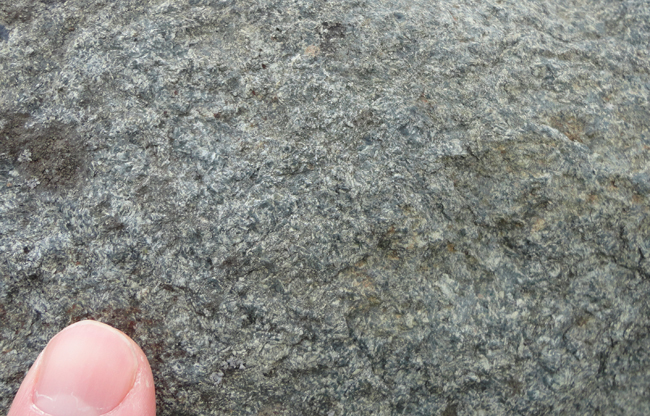
And there was a lot of sandstone. At first, I interpreted these sandstones as Chilhowee Group (Weverton Formation), but then I noticed on Scott Southworth’s 1995 map of the area that the Swift Run Formation (Zss) crops out here, just uphill from the winery, and so perhaps it was that:
So what’s all that, then? Here’s Southworth’s (1995) description of the units pictured in the hanging wall of the Short Hill Fault:

Structurally, the area is a relatively small syncline (the Hillsboro Syncline) that’s superimposed on the larger anticlinorial structure of the Blue Ridge province.
The upper Weverton Formation (€wu) is quartz-rich, and thus resistant to erosion, and “holds up” Short Hill Mountain.
There are no high strain zones delineated on Southworth’s map, but I saw two pieces of float that suggested mylonitization.
Not sure what to make of that…
Anyhow, it was cold out, and the fields were muddy, and Lily only had moccasins on, and then it started snowing, so we did what any ordinary couple would do on a date: we went inside and drank some wine.
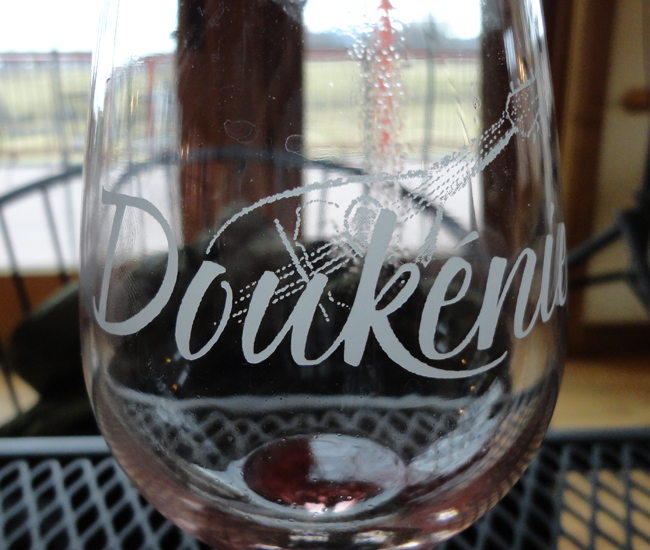
A colleague, Leanne Wiberg, comped us a tasting in absentia, and we heard the story of how the matriarch of the Greek family that owns the winery came to America with nothing but a mandolin for company. The mandolin is on display in the tasting room:
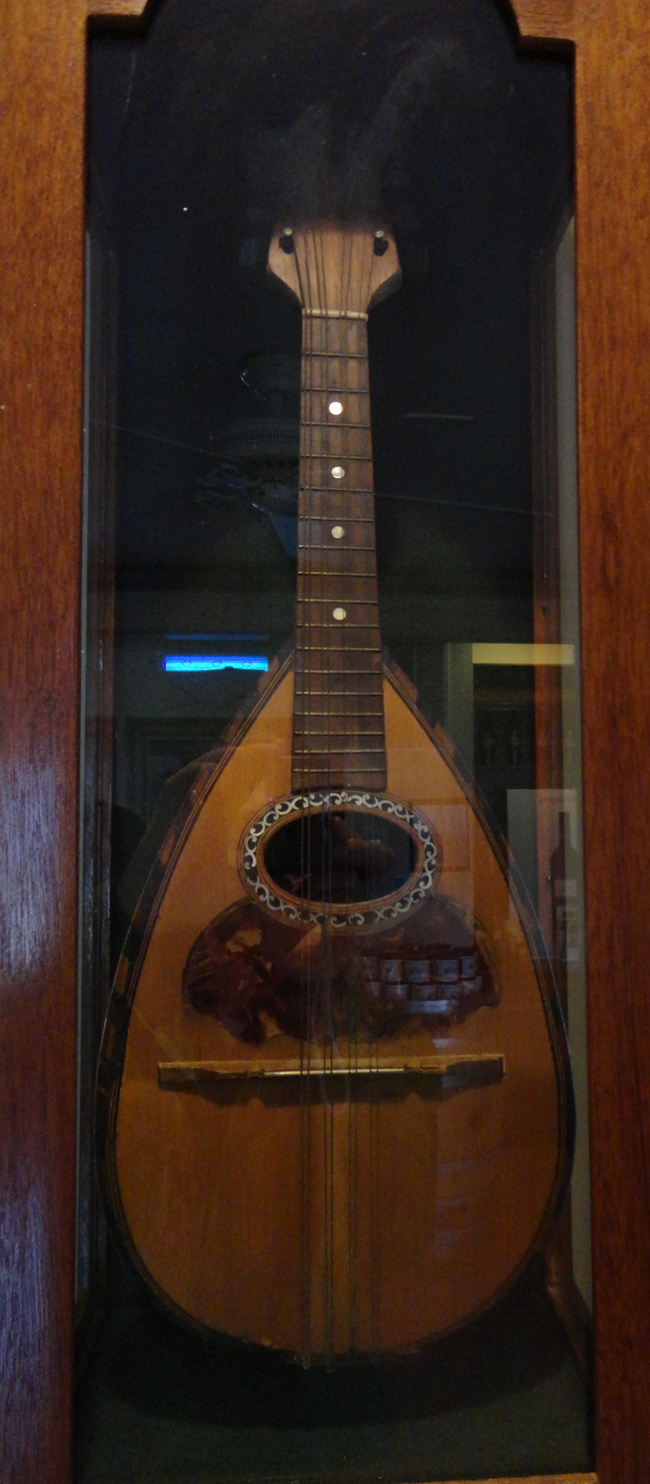
More later on this place – I hope to go back when the weather’s better, and I can climb the hill to see some outcrops.

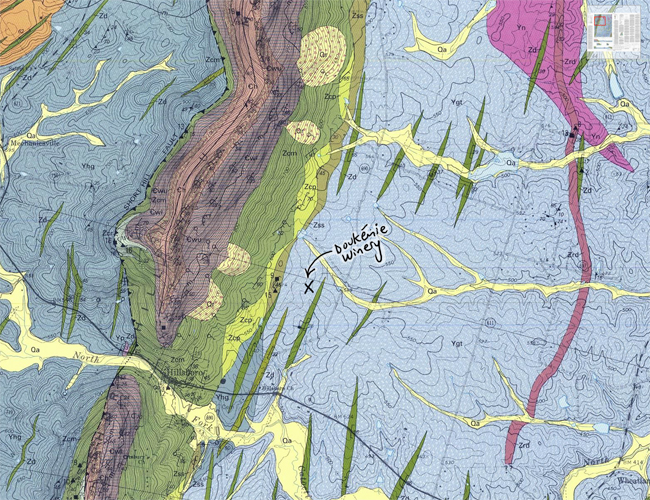
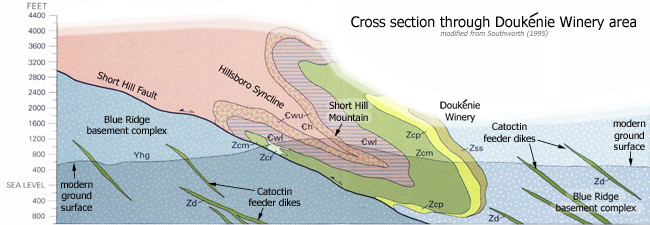
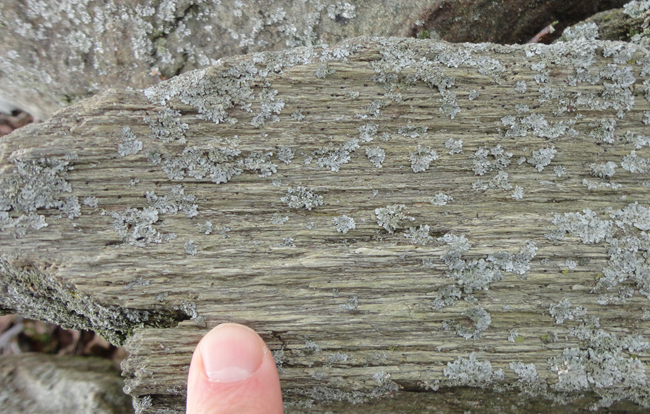
The object that your finger rests on is an example of mylonitization? I’m a biologist and it definitely resembles wood.
That’s what I thought at first, too: but it was rock. This was the best exposure I saw – and it’s not very good. But: at first glance, looks like ultramylonites from elsewhere in the Blue Ridge basement complex.